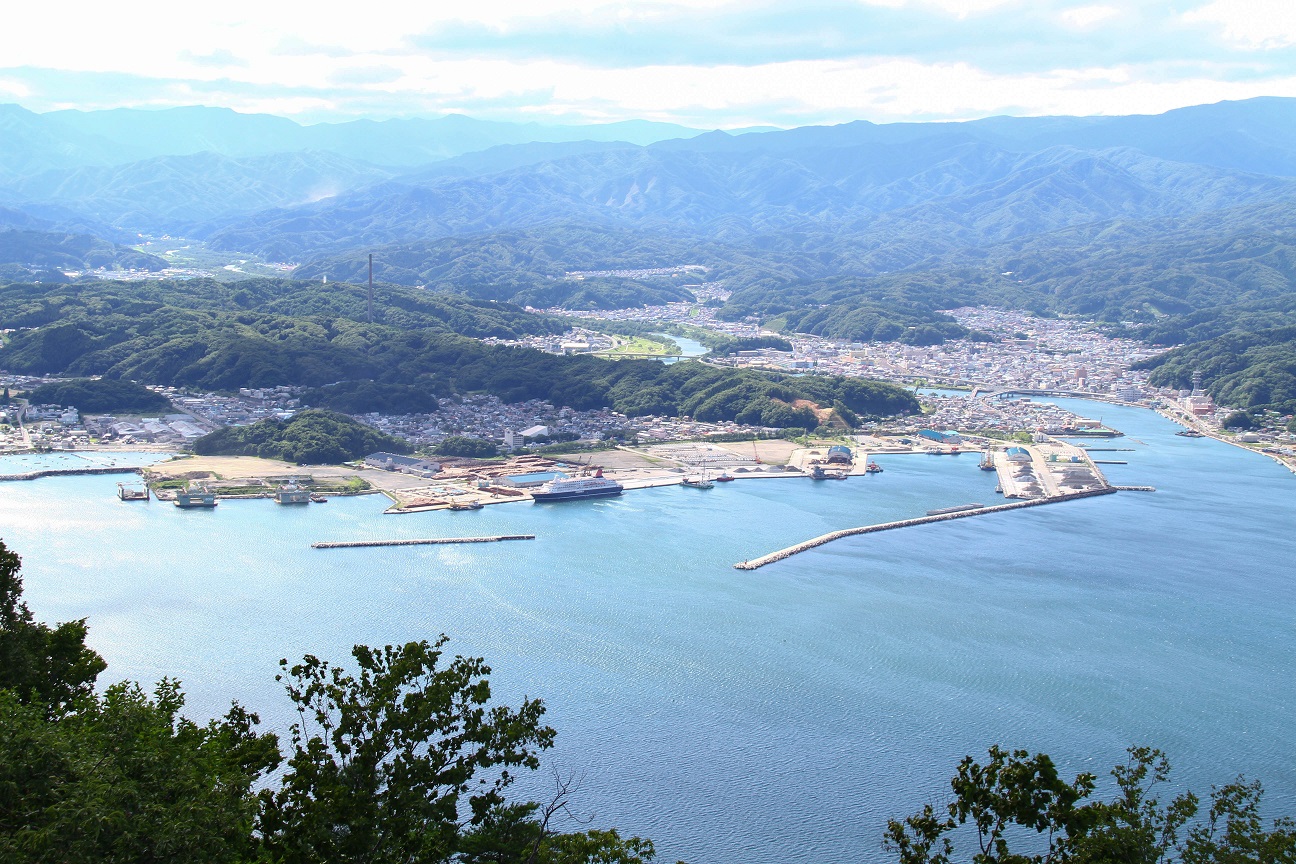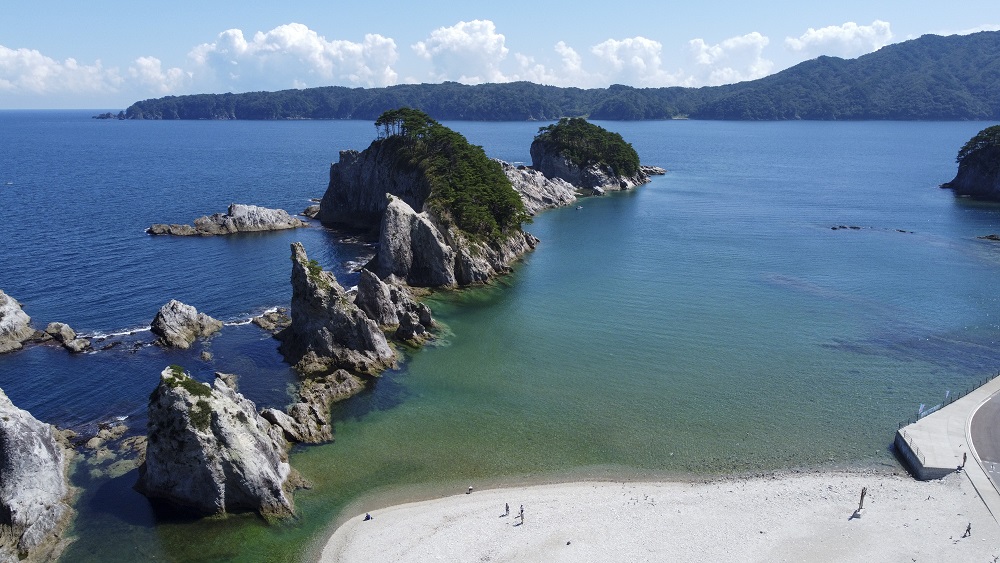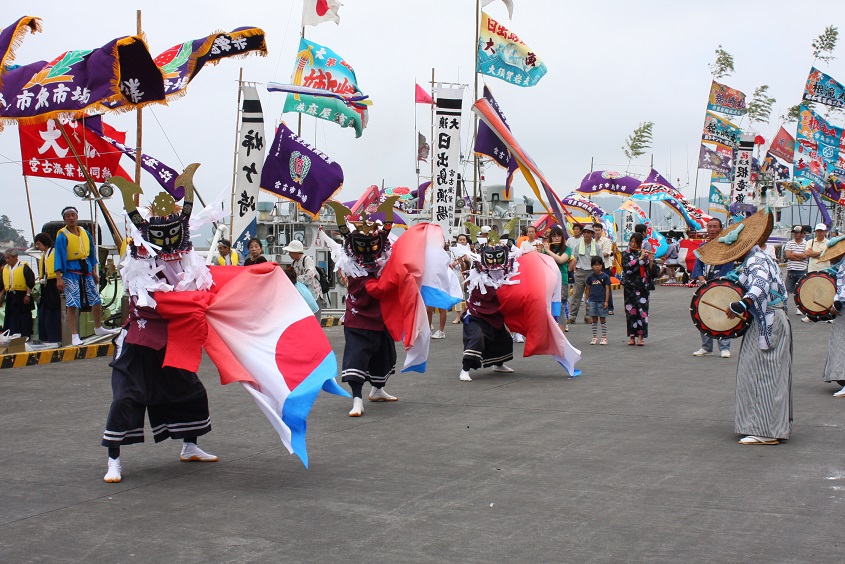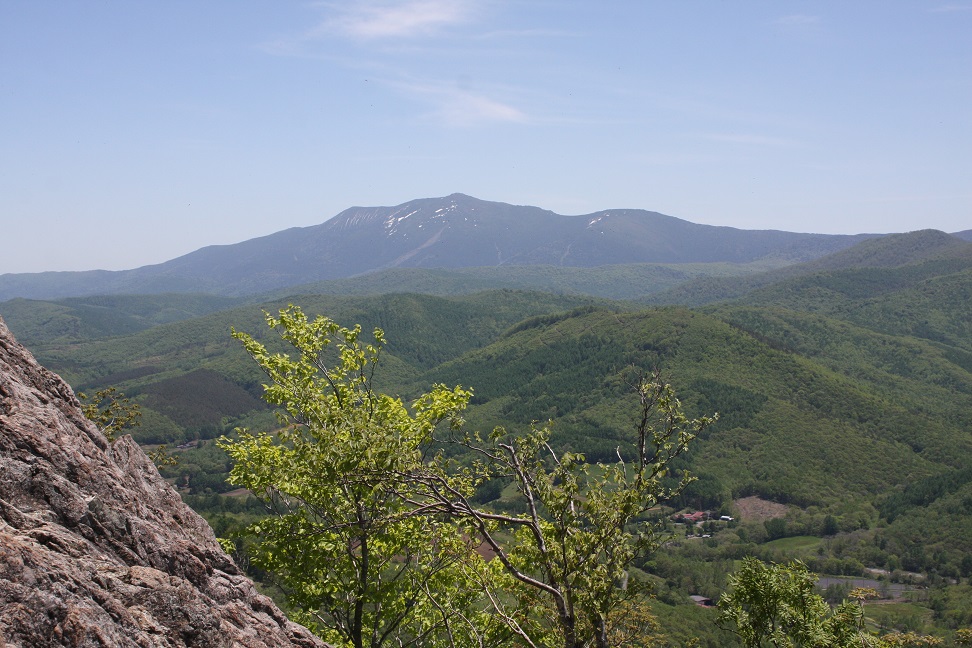AREA
A place where the legend of Yoshitsune’s northern escape is alive today
Miyako, located midway along the coast line of Iwate prefecture, is the easternmost town on Honshu Island. At Miyako Bay, featuring many small, terraced inlets, all kinds of marine products are harvested. As the shipping industry developed in the Edo period, the city flourished as a port town.
In contrast, an inland region of Miyako, formerly known as Kawaimura, is a typical mountain village on the north side of Mount Hayachine in the Kitakami Range. You can feel the life force of the people who have thrived for ages in this severe yet rich natural environment, and their respect for nature is evident everywhere. It can be seen in places such as Oguni Village, the setting for a well known collection of folk tales from the region, Tono Monogatari, that includes “Mayohiga,” an imaginary house that brings wealth to those who visit. There is also an uncharted region called Taimagura, which can be translated from the native Ainu language as a passage to the deepest part of the forest.
The region is also known for a legend of Minamoto no Yoshitsune, an ancient hero who is said to have committed suicide after losing a long battle. Yet the local legend believes that he did not commit suicide but escaped to the north. There are many locations in Miyako related to this legend, including Kuromoriyama, where Yoshitsune and his entourage is said to have trained; Kuromori Shrine, where it is said that they dedicated Hannyakyo or Prajnaparamita; and Yokoyama Hachimangu, where it is said that they prayed and found shelter. Some people believe that the origin of the name Kuromori (Kuro Forest) came from Yoshitsune’s pseudonym Kuro, so Kuromori really means Yoshitsune’s Forest.
Kuromori Kagura, a unique folk dance that still tours in the region
Located along the Sanriku Coast and with Mount Hayachine of the Kitakami Range as a backdrop, Miyako City has inherited diverse styles of folk performing arts from the coastal and inland regions. For example, you can see the Kuromori style of Kagura from the coastal region and the Hayachine style of Kagura from the mountains. You will also find Nanatsumono and Toramai Dance which are distinct to the coastal region, and Sansa-odori, which originated in Morioka, can be seen in the former Kawaimura, which was adjacent to the city.
Particularly unique to this region is Kuromori Kagura, which developed as a result of Yamabushi Kagura, rooted in mountain worship , blending with the region’s fishing village culture. It is loved by many for its bouncy, rhythmic music and dynamic dance movements. Many spectators have described the experience as “unforgettable once you see it.” Since the Early Modern Age, performing troupes have toured the coastal region of the former Morioka-han for one to two months after the New Year’s holidays. Kuromori Kagura was designated as an Important Intangible Folk Culture Asset by the government of Japan in 2006 for its rarity.
Geinoh List
三陸国際芸術推進委員会のサイトに遷移します
Geinoh ListProgram
イベント
-
【Official Tour/End of application】”FULL EXPERIENCE of SANRIKU-OFUNATO with SANRIKU INTERNATIONAL ARTS FESTIVAL”
-
Sanriku Geinoh Discovery Summit October 7 (Sat.) – 8 (Sun.), 2023
-
Sanriku International Art Festival 2023 September 2023→March 2024
-
Suggested Route|Trip to Encounter Rich and Colorful Geinoh – 3 Days and 2 Nights Sep.23rd(Fri Holiday)-25th(Sun)
-
Sanriku Geinoh Festival LINK September,2022-March,2023
-
Sanriku Kagaribi Bonfire Festival Sep.24th,2022
-
Miyako Folk Performing Arts Festival
-
Theater Project Miyako
コンテンツ
文化施設
-
Sakiyama Shell Mound Jomon-no-mori Museum
At the Sakiyama Shell Mound, remains of villages and shell mounds are preserved from the Jomon era of approximately 3500 to 6,000 years ago. The site is open to the public as a park where people can freely stroll. The museum, located inside the park, exhibits earthenware and bone tools excavated from the shell mounds, along with informational material on the geological strata of the site. This archeological museum also offers hands-on learning experiences on ancient practices such as a method for starting a fire and using an ancient bow and arrow.
Address| 1-16-1 Sakiyama, Miyako,Iwate,
027-0097,Japan
Phone| +81 (0)193-65-7526https://www.city.miyako.iwate.jp/bnka/sakiyamamuseum/sakiyama_museum1.html
-
Kitakamisanchi Folklore Museum
The Kawai region of Miyako is located north of Mount Hayachine, in the heart of the Kitakami Mountains, and 94% of the region is covered by steep forests. The Kitakamisanchi Folklore Museum exhibits approximately 3,500 items including daily household objects and tools that were used to sustain the life of people in the region. Those items, full of their wisdom and ingenuity, eloquently tell of their passion for life, invoking their livelihoods and way of life. Every June, the museum hosts a festival of Kagura from the Kawai region.
Address| 2-187-1 Kawai, Miyako,Iwate,028-2302,Japan
Phone| +81 (0)193-76-2167 -
The Miyako Public Hall
Since it opened its doors in 1976, the Miyako Public Hall has been an integral part of the culture and performing arts of Miyako City. For more than 40 years, it has been a hub of music, theater, visual arts and many other cultural activites. The venue is utilized by the citizens of Miyako for many activities including an annual city cultural festival, a folk performing arts festival, and music presentations by children. In recent years, community theater performances and Rakugo performances have particularly gained popularity. The hall also presents concerts by young performers, and provides visual arts and theater training programs for children and junior and high school students, as well as many other projects.。
Address: 2-22 Sokeioki, Miyako,Iwate,027-0023,Japan
Phone: +81 (0)193-63-2511
Facility
Miyako Tourism and Cultural Exchange Association (Miyako Station Tourist Information Center)
https://www.kankou385.jp/



